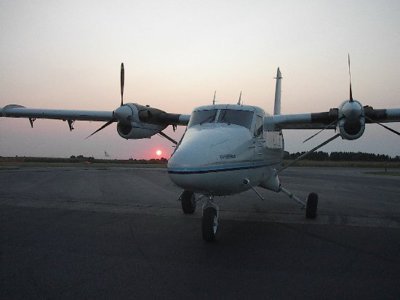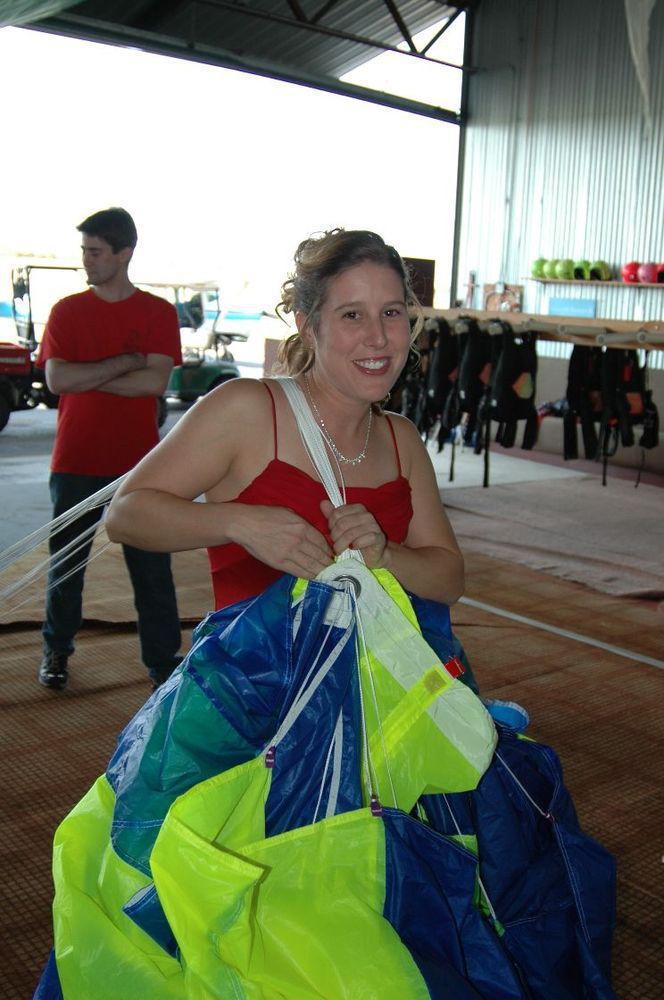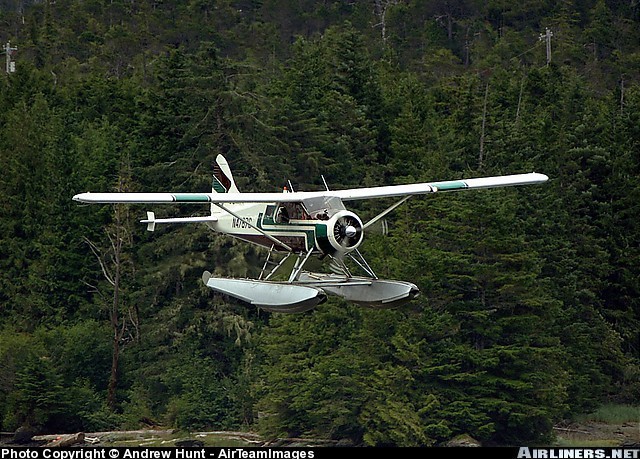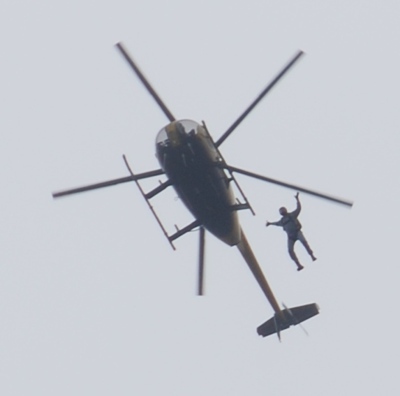skymedic 0
I think Noshit needs to realize that it is possible someone in back blew off the rules and didn't buckle up and contributed to the deaths of her friends just like Scott did by blowing off the obvious safety rules of flying a -20 on a hot day with a rolling start and half a runway.
Marc
otherwise known as Mr.Fallinwoman....
billvon 2,396
>a strong point(s) on the airplane.
As long as the connection system connects to the points that the harness is designed to bear load at (i.e. the 3 rings) I would agree. Attaching to other random points, like the chest strap, hip rings or chest rings, will result in loads that the harness was never designed to take.
As an example, if a short friend of mine were ever to use her Javelin as such a seatbelt, and attached carabiners to the hip rings, then in an accident she would suffer burns on her upper arms as she sailed out the top of the harness. The yoke was too big for her. It wasn't much of a problem in freefall or under canopy, but often in the plane it would fall off her shoulders.
The idea of using a skydiving harness as a seatbelt is a good one - but it has to be designed to be a seatbelt. Taking one piece of equipment and hoping it can be used for something else without any mods or additional testing isn't, in general, a good idea (IMO.)
QuoteBut Chris since QL peeps ALWAYS follow the rules it would be impossible that on this load someone wouldn't have put their seatbelt on so it was obviously a mistake by the NTSB in there investigation of the crash.
I think Noshit needs to realize that it is possible someone in back blew off the rules and didn't buckle up and contributed to the deaths of her friends just like Scott did by blowing off the obvious safety rules of flying a -20 on a hot day with a rolling start and half a runway.
First off to Chris, my initial response to you is THANK YOU FOR THE LINK, THAT IS WHAT I HAVE BEEN WAITING FOR. THE ANSWERS.
Now for Skymedic,
I did not hear the NTSB conclude with any conviction that restraints were "not used" but rather that they had failed because they were single point restraints attached to a side bar rail vs. double restraints or single restraints bolted to the floor. The NTSB concluded that even though they could have been tightened PROPERLY on that fatal jump, they still were not sufficient in preventing the jumper from violent forceful movement or total failure. This is what was shown by use of the crash test dummy. And now, thanks to my "dead Quantum peep friends" as you so distinguishly referred to them, people like yourself will now benefit as that part of skydiving (safety restraints) will soon be changing to become safer.
Secondly, thinking about "Scott blowing off the obvious safety rules flying a -20 on a hot day" as you also mentioned, that was one of the concerns and questions I addressed in an earlier post of mine as did I address his mistake to utilize only half of the runway. So your comments directed at me about what "I need to realize" are pretty redundant.
Trust me when I try to explain how disturbing it is to come across these findings; findings I have been waiting to understand and hear about for a very long time for an accident I probably should have been even closer to than I already am. On the other hand, those Quantum Leap "peeps" WERE my friends so why don't you show some respect.
I only hope you never have to witness or come close to seeing your jump plane with your skydiving family perish like I did mine or consider the thought that your only child could have become completely parent-less because of someone else's negligence. I am more angry about everything because I was so close to it all and it initially turned my life upside down but even so, my family and I were some of the luckiest people that day because I wasn't on that airplane. There are many other people who I care a great deal about who suffered way more than I did or ever will.
I never said the NTSB "obviously" made a mistake either, but I never heard them conclude only mention that Steve could have been a trajectory and so could Rob. Being that they may have been getting a shot, it is possible they weren't wearing their seat belts but the NTSB did not focus or create a huge point out of that, moreso they focused on the seat belt "FAILURE". And, to add, I never said it was "impossible" for us Quantum Leapers to not be wearing a seat belt but that it wasn't standard operating procedure. I have been on hundreds of loads with Rob and Steve and have ALWAYS observed them to wear seat belts until 1,000 feet. Rob was a stickler about gear and aircraft safety, Steve was an accident investigator for the airline industry. No it is not impossible, yes it is improbable without good reason.
I have a much clearer understanding now, watched almost the entire 5 hours and when I do have the time to sit and watch the rest of it I will. It also sounds like although the auto-feathering system was inoperable, the engine was "slightly" feathered before impact so I was merely trying to shed light on the fact that in the midst of all the other catastrophe surrounding the event and it is not my idea or desire to defend Scott by any means... but Scott may have done some things right.
In my conclusion, I was very impressed with the NTSB and all of their findings. I was very glad to get to watch their presentation narrated vs. just looking at the power point notes like I did earlier. I agreed wholeheartedly with everything from their findings to their points made, the only thing I may have question over was the seat belt issue with Steve and Rob. I wasn't convinced that they were 100% conclusive there.
The NTSB is taking the approach that things have been overlooked for too long and perhaps it is time for change... I couldn't agree more. If my friends lives weren't worth at least that then what can we gain from any of our lessons?
Sting: "Be yourself no matter what they say."
breel007 0
I have seen issues with jump aircraft that caused my to decline to fly the aircraft, and as such I declined to jump it as well until the issues were resolved. In the meantime the aircraft continued to fly jumpers.
Would you really want to get on an aircraft that might not be able to, based on a knolwledgeable opinion, get you to altitue? The problem is that most skydivers don't have the aviation knowledge and or of course don't preflight the aircraft to understand when there is something terminally wrong with the aircraft. More regulation helps everyone to ensure aircraft are fundamentally safe.
As far as I'm concerned skydiving is a pasenger carrying operation and pilots should be trained to part 135 standards. Yes, this would cost more money, but Part 135 exists for a reason, so that charter customers get what they pay for. They pay for transportation from point A to B, not a crash and burn. Same with jump tickets. The customer pays for transport to 13K feet.
Accidents that we see with jump aircraft are typically unexcusable (spinning in from full altitude, running out of fuel), and sometimes it takes increased regulation and scrutinity to correct these issues.
A ture, catestrophic, mechanical engine failure, may result in deaths (though it doesn't have too). This is a fact of aviation. But how would you feel you found out that you pilot had never trained for the engine out procedure in the aircraft that you were riding in. Training at least gives you a flighting chance. Most jump pilots will never see engine out procedures unless they get sim-training.
Your life and the lives of your friends is worth it.
htrammel 0
and maybe even "Ghost Riders". These are FAA Inspectors that pose as paying customers just so they can check things out incogneto
Ummm...really?
totter 2
Just to check your procedures without you knowing.
tkhayes 125
The thing I did not see in the NTSB's findings was any comparison to other GA accidents and such. is 172 dead people over 32 years (or whatever is was) out of line for aviation accidents?
or are we being singled out because of the nature of our sport. It is always some spectacular headline when a skydiver is killed. But the guy who flies his airplane into the ground is on the news for 1 episode and then forgotten.
The FAA already has standards and procedures in place to regulate us (airplanes). It also sounds to me like the inspections, FAA oversight (at least in the case of Missouri) and such were NOT being done. So we are going to make MORE rules and set MORE standards that will also likely not be followed?
If you are willing to spend $400 on a tandem jump, and $55 for a jump ticket, then fine. I will go buy a new 400 series Twin Otter and keep it at 135 standards for all of you.
But I bet you aren't, and I bet we (mostly) all go out of business.
totter 2
When you compare skydiving to the rest of General Aviation it is apples and oranges. The accident rate for "other than skydiving" aircraft is higher.
There are some other more important differences, though.
1) The accident ratio for skydiving aircraft is higher, at least for this year. If you look at the thousands of "private" aircraft flown to their accident rate and then look at the hundred some odd aircraft used for skydiving and its accident rate, there is a big difference.
2) When Joe Smith takes his 210 out for a Sunday afternoon and balls it up into a tree, killing himself, it does make it to the news. Its just not big news because he did not take unwilling people with him.
When 10 skydivers pay for their jump tickets or tandem jumps they are kind of expecting that the aircraft that takes them to altitude is safe. You know the saying, "The jump is free, it's that ride that costs you." They are paying passengers. If the pilot makes a mistake or the aircraft has a mechanical issue and crashes these people are unwilling participants. That is why these events get more media attention. Just like when a MD80 nose dives into the Florida Everglades.
As for oversight it depends where the DZ is located. If it's located near a FSDO office then the degree of oversight is much larger then if the DZ is located in the middle of the Great Plains 300 miles from the closest FSDO.
Also, with Part 91 General Aviation aircraft, the FAA is not required to make regular visits. The amount of GA airports and aircraft just out weigh their manpower.
As far as operators go, it's the ones that believe that they are above the Regs or can "Do what ever they want", that are going to make it hard on the operators that do toe the line, as you do.
When you fly your 182 with the Carb heat not working and ball it up short of the runway and during the investigation the FAA finds that maintenance was not being performed by a certified mechanic. What do you expect.
When there is an investigation due to an incident and the FAA finds that the pilot is not appropriately rated & their medical is out of date. What do you expect.
I did not know Scott personally and I was not familiar with that aircraft or his operation. But Compressor Blades just don't fail. There was no sign of FOD damage, according to the NTSB finding. This leaves distress caused by an Overspeed condition of the compressor section or corrosion of the blades or , I hope not, parts that were past their life limit.
The first two of these probables have correction actions that are not difficult and in the beginning, not that expensive.
Unfortunatey the third one is harder to correct because the easist way to save a buck is to fudge your aircraft's time and cycles on the records. And unfortunately there are operators that do this.
Sorry for the rant.
tkhayes 125
And other GA I refer to still covers commercial flights, as well as private.
The fact is that I have no idea how we compare. I am really asking that question, How DO we compare to other operations? It is a component of the investigation, and if they are going to slap restrictions on us when we can show that we are no less safe than anyone else, then I have a problem with that.
It's like saying skydiving is unsafe because 30 people die each year. But if 43000 people die each year on the highways, apples, oranges or whatever you want to call it, don't tell me that skydiving is unsafe....
I have seen plenty of unsafe skydiving operations in my day. And for years they operate and no one gets hurt. I have seen plenty of safe skydiving operations where people get killed. Everyone makes mistakes and everyone is vulnerable to the crash situation every day. Everyone cuts corners SOMEWHERE in their operation, whether you are DZO "Bubba' or American Airlines.
How much money and how much effort are we going to put into making rules that will probably not be followed anyway by at least some of the people.
The enforcement of what we have already is far cheaper than raising the bar for the entire industry. As yes, we do have a higher responsibility since yes we are carrying paying passengers, I agree with that.
I think there are just as many private/commercial pilots out there that ball up their airplane because they tried to fix their carb heat themselves and there are just as many that do not have the requirements or medical as in ANY other facet of aviation, except for the major airlines.
I think that is true, and therefore I think that skydiving should not be singled out for a 'repair' by the FAA or the NTSB.
Look at the number of flights, the number of passengers-hours flown and I expect we are doing a pretty good job. Fix the problem. We just differ on what the problem is.
If the FAA decided to inspect all the dropzones & their aircraft in the USA right now due to the outcome of this report, I would be OK with that. A lot of things would get fixed. A LOT of things. It would cost some operators a lot of money. It would cost all of us some money. But a lot of things would get fixed.
If you change the rules and raise the bar, it will cost ALL of us A LOT of money. And arguably may not save any lives in the long run.
I can understand your fears from an operator and a jumper's perspective. I do feel for DZOs who will be financially affected by this. Not the ones who are running a shoddy business with shoddy staff or pilots, but the ones who run a safe operation and don't cut the important corners but they also don't really enjoy or look forward to the FAA breathing down their back either.
I begin to see patterns with human behavior at times. It seems like sometimes we get a warning that something needs adjustment. We prolong fixing it until it becomes so severe that we have to deal with it, dealing with it means changing the status quo to which humans will naturally rebel and the initial change will cause the sink or swim effect putting greater pressures or stress on the participants to succeed. No one likes to have to sink or swim.
However, generally if handled properly, the end result will be a greater improvement for the greater good.
It is a difficult crisis that needs attention and while we once had greater freedoms, maybe if the skydiving industry does clean up it's act the FAA will not see the need for continued increased oversight.
My belief is that whether DZOs want to hear it or not, safety, above costs and all else should be held paramount. If it costs $400 to do a tandem skydive because collectively as an industry that is what is needed to make it safe from these types of problems, my guess is that most tandems (being they jump once and don't come back) will just have to save a little more money to get the experience; just like nowadays, when you or I want to travel by air, we now have to save extra that we didn't use to have to for things like checking a bag or two on, fuel costs and any other costs or surcharges that are successfully passed down to the consumer.
Will sales hurt? Initially yes, mainly because skydiving is not a necessity like air travel might be for business and such. But for as long as people want to do it and there is a calling for it, business will continue to thrive. Initially DZOs may sustain some blunt force trauma to their pocketbooks and that sucks if they aren't able to stay afloat.
Hopefully though, in the end, the shoddy outfits will not exist because they won't be able to afford to make their DZ safe, leaving the business to the surviving DZs who can can show a pattern of real safety. Those DZs with the demand for the sport can then pass their incurred costs to the consumer as well.
I worry more for the experienced jumper if they need to pay $50 a jump vs. an average of $23 a jump. It may suck and you can still die doing it even with the increased costs but if I could pay a little extra "insurance" for a jump ticket for the peace of mind that your ride to altitude has been properly maintained and is being flown by someone who is rated and competent, I certainly cannot speak for all skydivers but to me, that piece of mind is way more worth the extra costs.
Think of how much business you could lose if skydiving continues to get the rap and continued media attention for airplane crashes due to negligence and/or lack of regulation. That my friend is a slippery slope with ramifications that are final, irreversable and extremely detrimental.
I am sure the financial impacts may be more complex and severe than I have illustrated above and each DZ and situation is different but I can assure you when these kinds of tragedies happen, it is not good.
Sting: "Be yourself no matter what they say."
Martin
AC DZ
Quote
However, generally if handled properly, the end result will be a greater improvement for the greater good.Quote
Yes and No! It would most likely improve the greater good, But! We are always attempting to overcome gravity, aircraft will continue to crash, jumpers will continue to die. There is no amount of money that can be spent that will alter this process, If you want to be perfectly safe in aviation you stay on the ground and hope a flying aircaft doesn't find you.
My belief is that whether DZOs want to hear it or not, safety, above costs and all else should be held paramount. If it costs $400 to do a tandem skydive because collectively as an industry that is what is needed to make it safe from these types of problems, my guess is that most tandems (being they jump once and don't come back) will just have to save a little more money to get the experience; just like nowadays, when you or I want to travel by air, we now have to save extra that we didn't use to have to for things like checking a bag or two on, fuel costs and any other costs or surcharges that are successfully passed down to the consumer.Quote
You can have anything you want! You must pay for it! Look at the current crisis in the medical industry and costs, you want the medical best? Bust out the wallet! If you want the safest DZ? Again bust out the wallet!
Will sales hurt? Initially yes, mainly because skydiving is not a necessity like air travel might be for business and such. But for as long as people want to do it and there is a calling for it, business will continue to thrive. Initially DZOs may sustain some blunt force trauma to their pocketbooks and that sucks if they aren't able to stay afloat.Quote
Most of the DZs that I know cannot stand any blunt force trama from loss of business! Just because you see people at the DZ doesn't imply that the operation is thriving, (making a profit) Aircraft flying with people jumping dosen't always compute to any profit in the activity.
Hopefully though, in the end, the shoddy outfits will not exist because they won't be able to afford to make their DZ safe, leaving the business to the surviving DZs who can can show a pattern of real safety. Those DZs with the demand for the sport can then pass their incurred costs to the consumer as well.Quote
NO! They will be the first to survive! Because jumpers and students will support them because of the lower costs to jump at these locations, this process of improvement can only occur if jumpers and the public are willing to do the ethical thing and not support poorly run operations, but this will never happen as people allow their finances to dictate their support.
I am sure the financial impacts may be more complex and severe than I have illustrated above and each DZ and situation is different but I can assure you when these kinds of tragedies happen, it is not good.
As usual the burden is placed upon the persons least responsible. Many DZs do comply and spend the necessary time and money to meet the required standards, it is the few whom do not that create and support the problem, this problem is perpetuated by the support of the student public and their local jumpers, If you want to see safety and change, don't jump at these locations, stop sending your friends to train, you can be much more effective by withholding your cash than the government can be with increased survaillance.
I heard people state! Well I didn't know there was a problem? I'am sorry this is a poor excise and not a reason, if you wish to play the game of risk, you are foolish if you do not arm yourself with knowledge before you walk into the fray! And no it is not USPAs responsibility or the DZs to force you to exersice some common scense!
.
.
QuoteI'am sorry this is a poor excise and not a reason, if you wish to play the game of risk, you are foolish if you do not arm yourself with knowledge before you walk into the fray! And no it is not USPAs responsibility or the DZs to force you to exersice some common scense!
Well said.
You're not as good as you think you are. Seriously.
DBCOOPER 1
If the plane is unrecoverable then exiting is a very very good idea.




.thumb.jpg.4bb795e2eaf21b8b300039a5e1ec7f92.jpg)





http://www.ntsb.gov/Events/boardmeeting.htm
Click on real video. It is the webcast of the accident discussion. There are pictures of the restraints used and discussion was made how they were not sinched down or not used at all. Go watch.
www.diverdriver.com
ATP/D-19012
FB #4125
Share this post
Link to post
Share on other sites